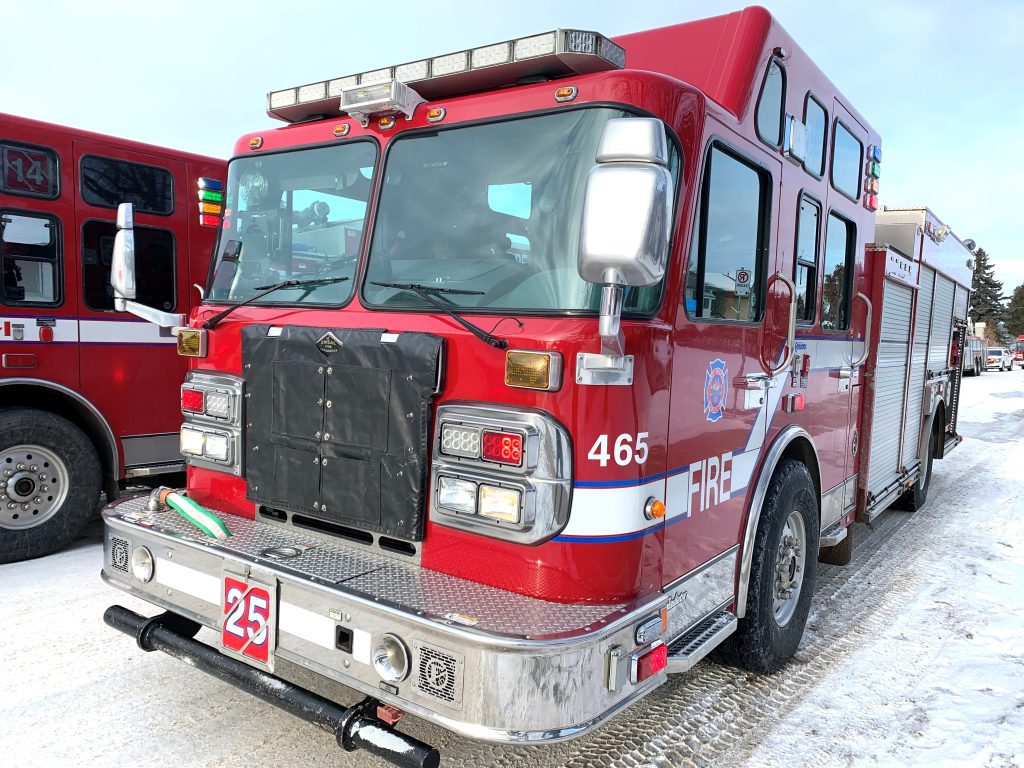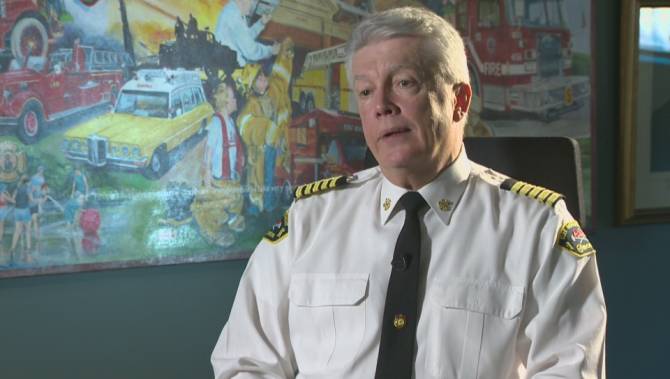Edmonton Fire Rescue Services is planning to put into action a four-step plan to lower the amount of medical calls firefighters are assigned to.
In 2023, the department received 95,496 service calls. 69 percent of them were medical calls, not fires or other emergencies.
Between 2018 and 2023, the number of medical calls for Edmonton firefighters increased by 82 percent.
Comparatively, Calgary, Toronto, Vancouver, and Ottawa firefighters responded to a lower percentage of medical calls than Edmonton.
EFRS anticipates responding to up to 80,000 medical calls annually by 2024.
These include immediately life-threatening situations like cardiac or respiratory arrests, time-critical calls like chest pain or overdoses, urgent but potentially serious calls, and non-urgent calls.
About 31 percent of the medical calls EFRS handled in 2023 were not immediately life-threatening or time-critical.
In 2017, Edmonton firefighters began administering naloxone to help reverse drug poisonings.
Between 2018 and 2023, the number of drug overdose and poisoning calls Edmonton firefighters responded to rose by 790 percent.
Starting at the end of March, EFRS will start putting a four-step plan in place to ease that workload.
Starting on March 31, the lift assist protocol will be revised to align more closely with the Calgary Fire Department’s.
Edmonton firefighters will only need to respond to lift assists when paramedics need time-critical help or when all other EMS resources are tied up.
Then, starting May 1, Edmonton firefighters will only be automatically dispatched to medical events when they are considered immediately life-threatening. This is intended to reduce the number of times firefighters are driving around mid-call when they are not needed.
Also on May 1, the types of medical calls EFRS responds to will change, decreasing the number of not immediately life-threatening calls a fire crew is sent to.
The fire department consulted staff and worked with Alberta Health Services to identify those calls, aligning them with the service levels of the Calgary and Vancouver fire departments.
This move is expected to reduce EFRS’ medical call volume by 31 percent.
Then, in June, EFRS will go to fewer medical calls at certain locations.
The fire department has worked with AHS to identify 33 high-call-volume locations where it believes medical staff and equipment are already available, so firefighters may not be needed.
Once the plan is implemented, there will be an ongoing evaluation to ensure service levels are being met.
“I just wonder, with some of the action items that are noted in the report, if people’s safety is going to be at risk,” Coun. Jo-Anne Wright told Global News Monday.
She made the motion requesting the report and says it lacks information, including the financial burden the City of Edmonton is shouldering to send firefighters to so many medical calls.
Wright was worried that if firefighters attend fewer lift assist calls, it could leave vulnerable people, including seniors, waiting for help.
She is unsure if dispatchers understand the reasons for the fall when speaking to people being dispatched.
EFRS is dealing with a rise in call volume and operating spending, especially since 2020.
EFRS has experienced a 45.6% increase in fuel use and a 100.8% increase in fuel costs.
The upcoming report states that the changes will not increase the risk to the public, and people will still receive an ambulance or alternative as determined by AHS dispatch.
Mayor Amarjeet Sohi attributed the report to the province underfunding EMS services in Alberta.
Sohi mentioned that firefighters are now handling more work due to underfunding, and there needs to be discussions with the provincial government about the impact of that.




